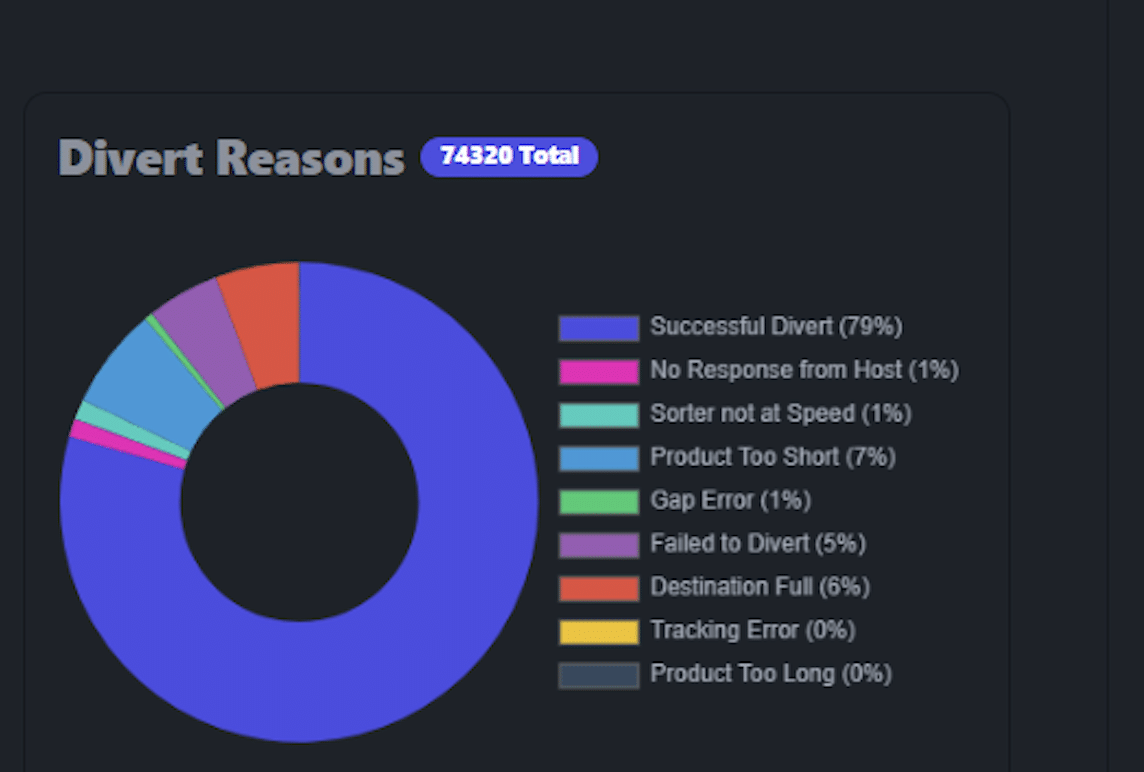
The Concrete, Every Day Value of Warehouse Software: Part 1
As a company that created and continues to develop, market, and sell warehouse software, Pendant is always working on ways to attract new clients to our Revolution Street WXS.
The priority is creating a product that is way more valuable to the user than the cost of the product. And the value has to be easy to find.
What’s This About?
We’re starting on a series of posts today designed to reveal interesting ways in which our WXS delivers concrete. Your warehouse operation will grow and evolve. We’re focusing on how we help you:
- Make fast, well-informed decisions based on practical information available at your fingertips.
- Solve and prevent problems quickly and thoroughly.
- Maximize the potential of all your investments in warehouse automation.
Today’s post is about using the WXS to solve problems that are preventing higher throughput.
The Background
(Note: there’s some technical detail coming. If you want the TLDR version, please skip here.)
The screenshot below of a single week from an actual deployment of Revolution Street WXS 2.0 is a great example of how to get value from your warehouse software. A couple of quick background facts:
- Pendant’s scope was to replace the existing warehouse software.
- The sliding shoe sorter in this warehouse has 12 diverts with a recirculation loop.
- The client was concerned about jams and incorrect assignments of shoes to packages.
- In some cases, too many shoes were deployed for shorter packages, and too few were deployed for longer packages.
The Data
Pendant used the charts to investigate potential root causes. Our engineers noticed the following:
- The recirculation rate is 21%.
- One third of the recirculated packages (7% of the total) were designated as “Product Too Short”.
- About 30% of the recirculated packages (6% of the total) were due to “Lane Full” conditions at the assigned divert.
- Almost 25% of the recirculation load was from packages that “Failed to Divert”.
- The divert issues were spread pretty evenly among all of the divert lanes.
The Solutions
The “Product Too Short” and “Lane Full” categories require some operating changes by the client. Our team therefore shifted focus to the “Failed to Divert” category. One important conclusion: in the absence of this information from the WXS, the client would not have known the causes nor the magnitude of the issues. They would have had to guess at the causes and hope for solutions.
Based on the information taken from the new warehouse software, Pendant’s engineering team looked into the pre-existing PLC code for the sorter (we don’t do just software). This led to investigating the operation of the encoder – a critical component in determining how many and when to fire the shoes that divert the packages on the sorter. They found that this encoder was set up with less than half the number of pulses we like to see per inch of conveyor travel. More simply, the “resolution” was way too low. The fix is to change the sorter code to increase the resolution, and the expected outcome is a reduction in the “Failed to Divert” category to less than 1% of the packages. Combined with the operational changes mentioned above, the reduction in recirculation rate will be substantial.

The value of reducing recirculation rate is clear. Each recirculated package takes the place of a new package on the sorter – a finite resource. At 75,000 packages in a week, a reduction in the recirculation rate from 21% to say 10% (still too high, but we’re just being conservative)), means that over 400,000 packages a year will not loop and instead will divert to their intended location. The savings should be obvious.
The “Too Long, Didn’t Read” (TLDR) Version
- One of the main benefits of the Revolution Street WXS is the amount of useful information you receive about your operation that you otherwise wouldn’t have.
- In this specific case, the info is used to quickly understand possible root causes of the high sorter recirculation rate (21%), and zero in on a fast, lasting solution (modify the PLC sort code and increase the encoder “resolution”).
- Finding this solution without the information received from the WXS would be a process of trial and error that could take a long time and produce a less optimal result.
What’s Next?
In future posts in this series, we will show you how easy it is for you to:
- make changes to your system without having to call us.
- purchase cool add-ons for your maintenance team.
- get other add-ons that give you crystal clear vision into your system to speed up troubleshooting, provide video evidence where needed, increase your picking efficiency, and more.
- receive a rough idea of the investment you would make to add Revolution Street to your operation.
To learn more about how to fit Revolution Street WXS into your operations, find us here.